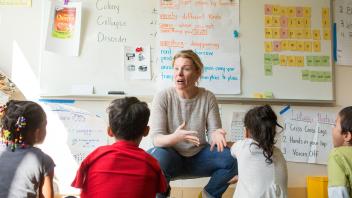Primary sources are finding their way into elementary classrooms. This is so exciting — students usually love to work with primary sources because they provide such an inside view into a time period or event. “Mom! It was a REAL picture of a REAL bank robber!” Primary sources, or original materials, are often artifacts such as pottery and clothing, or documents such as diaries, speeches, letters and photographs.
The Library of Congress has an enormous digital collection that provides access to print, pictorial and audio-visual collections. Besides housing a huge collection of primary sources, the LOC also provides helpful advice for teachers looking to use primary sources with students through their Teaching With the Library of Congress blog.
It was within that section of the LOC website that I recently came across Teacher’s Guides and Analysis Tools for working with primary sources. The Primary Source Analysis tool provides an online place (or print it as a PDF) where students can record observations, reflections and questions about primary sources. If a student isn’t sure what to do within an area, sample questions provide some help. For example, within the Observe section, students benefit from online prompts which include Describe what you see, What do you notice first?, What people and objects are shown? and others.
There are several other helpful Teacher’s Guides that provide frameworks for analyzing other types of primary sources, including photographs and prints, oral histories, maps and more. Hopefully something within these guides and documents will be helpful to you!

